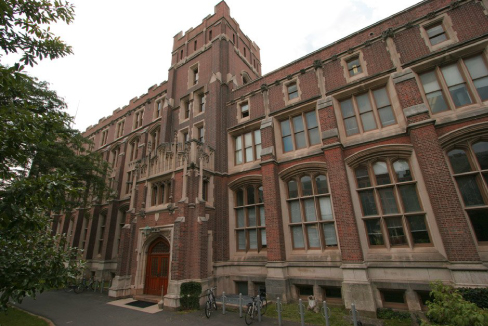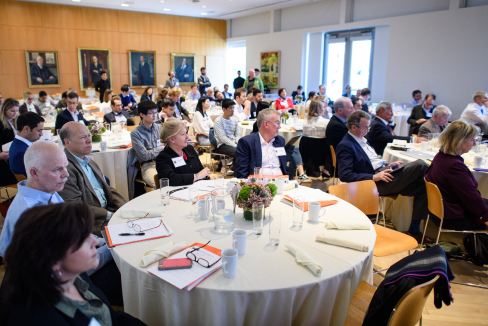Principal Investigators
At a Glance
To help combat climate change, several countries have programs that incentivize landowners to make land-use decisions that reduce net greenhouse gas emissions—like avoiding deforestation, planting trees or practicing no-till farming. The Environmental Markets Laboratory (emLab) at the University of California, Santa Barbara (UCSB) is conducting econometric analyses, (i.e., using statistical models to analyze economic data) to understand the effectiveness of these incentives on a national and global scale. The goal is to explore how responsive land-use decisions are to market prices, and the political, cultural and economic factors that influence these responses. Research findings will help policy makers understand the potential impact that incentives for land-based climate solutions could have on land use and associated emissions and help companies with ambitious net-zero goals utilize land in an optimal way.
Research Highlight
The Earth’s land has the ability to store or release carbon into the atmosphere, depending on management choices landowners make. To help meet climate goals, policy makers and practitioners across the world are exploring programs that incentivize private landowners to manage their land in a way that reduces net greenhouse gas emissions. These efforts include practicing climate-smart agriculture, avoiding deforestation or pursuing an array of other “land-based climate solutions” (e.g., wetland restoration or afforestation). In addition to mitigating climate change, these solutions have the potential to protect biodiversity and affect food production.
However, the impacts of land-based climate solutions on climate, biodiversity and food security may be limited by socioeconomic constraints. In particular, there is little evidence detailing how responsive private landowners will be to incentives that seek to encourage changes in land use. The emLab project seeks to fill this gap by quantifying how responsive land use decisions are to financial opportunities, and whether this responsiveness varies across regions, political regimes, cultures and economic systems.
Understanding if and how much land-use decisions respond to financial incentives across different locations will help policy makers and practitioners find the most effective solutions that balance climate mitigation, biodiversity protection and food production.
There are two main components of this research project. The first investigates how local changes in financial opportunities for crop production affect landowners’ land use decisions to convert forests to croplands, or to allow croplands to revert to forests. By quantifying landowners’ responsiveness to local increases in crop prices, the research team can simulate how land use decisions might change in the presence of new incentives such as payments for reforestation, or taxes discouraging forest clearing. The emLab team is combining econometric methods that seek to isolate causal relationships with remotely-sensed maps of forest and cropland areas, and global datasets detailing crop prices, potential yields and market integration. The aim is to capture global trends in land-use responsiveness to market prices of crops and variations across different regions and scenarios (Fischer et al., 2021; Hansen et al., 2013; IMF 2022; Nelson et al., 2019; Potapov et al., 2021). Initial findings indicate a positive relationship between potential crop revenues and deforestation (see Figure 11.1). Outliers to this relationship are located in rather remote places with limited market access.

The amount of deforestation occurring in a location (y-axis) tends to rise as the potential revenues from crop production (x-axis) increase. Outliers with unusually low deforestation and high potential revenues tend to be in locations that are located far away from the nearest market (colors).
The second part of our project dives deeper into a country-level case study of land-based climate solutions in Brazil. Brazil currently has a suite of different policies in place that individually seek to encourage climate-smart agriculture, reduce deforestation and accelerate forest restoration. This project explores how these different incentives interact with each other to re-enforce, or undermine, broader climate, biodiversity and food production goals. For example, payments for forest restoration may push additional agricultural expansion into primary forests, undermining carbon and biodiversity benefits. EmLab researchers are exploring these dynamics by developing a high-resolution land use model at the national scale. The goal is to simulate a variety of policy mixes to identify how policies can be integrated to maximize their collective impact.
References
Fischer, G., F.O. Nachtergaele, H.T. van Velthuizen, F. Chiozza, G. Franceschini, M. Henry, D. Muchoney, and S. Tramberend, 2021. Global agro-ecological zones V4 – model documentation. Rome, FAO. (https://doi.org/10.4060/cb4744en).
Hansen, M. C., P. V. Potapov, R. Moore, M. Hancher, S. A. Turubanova, A. Tyukavina, and D. Thau, et al., 2013. Highresolution global maps of 21st-century forest cover change. Science 342(6160):850–53. (https://doi.org/10.1126/ science.1244693).
IMF. 2022. Primary Commodity Price System. (accessed Feb. 13, 2023). (https://data.imf.org/?sk=471DDDF8-D8A7-499A-81BA5B332C01F8B9)
Nelson, A., D.J. Weiss, J. van Etten, A. Cattaneo, T.S. McMenomy, and J. Koo. 2019. A suite of global accessibility indicators. Scientific Data 6(1):266. (https://doi.org/10.1038/ s41597-019-0265-5).
Potapov, P., S. Turubanova, M.C. Hansen, A. Tyukavina, V. Zalles, A. Khan, X. Song, A. Pickens, Q. Shen, and J. Cortez. 2022. Global maps of cropland extent and change show accelerated cropland expansion in the twenty-first century. Nature Food 3:19-28. (https://doi.org/10.1038/s43016-021-00429-z).






